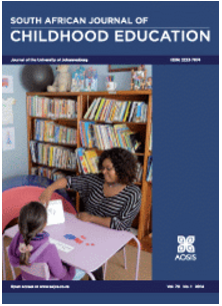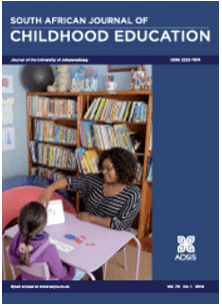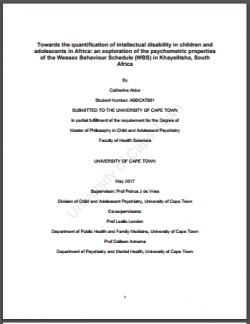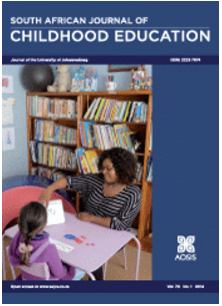The use of Iscamtho by children in White City-Jabavu, Soweto : slang and language contact in an African urban context
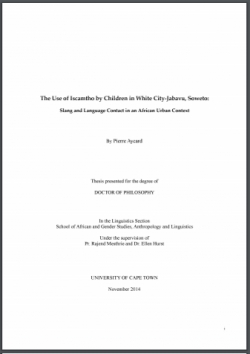
Type
Thesis
Authors
Category
ECCE, Foundation
[ Browse Items ]
Publication Year
2014
Publisher
University of Cape Town, Linguistics, Cape Town, South Africa
URL
[ private ]
Pages
441 p.
Subject
Early childhood education, Primary education, Foundation Phase, Children, Language usage, Slang, Tsotsitaal, Iscamtho, Sociolinguistics, Language contact, South Africa
Tags
Abstract
The work presented in this thesis relies on language recordings gathered during thirty months of fieldwork in White City-Jabavu, Soweto. The data was collected from children between the ages of two and nine, following anthropological participant observation, and through the use of an audio recorder. Strong attention was given to the sociolinguistics and structure of the language collected. This thesis is interested in issues of slang use among children and language contact, as part of the larger field of tsotsitaal studies. It is interested in: sociolinguistic issues of registers, slang, and style; and linguistic issues regarding the structural output of language contact. The main questions answered in the thesis concern whether children in White City use the local tsotsitaal, known as Iscamtho; and what particular kind of mixed variety supports their use of Iscamtho. Particularly, I focus on the prediction of the Matrix Language Frame model (Myers-Scotton 2002) regarding universal constraints on the output of language contact. This model was used previously to analyse Iscamtho use in Soweto. Using methodologies from three different disciplinary fields (anthropology, sociolinguistics, and linguistics) as well as four different analytic perspectives (participatory, statistical, conversational, and structural), I offer a thorough sociolinguistic and linguistic description of the children's language. I demonstrate that the universal constraints previously identified do not apply to a significant part of the children's speech, due to stylistic and multilingual practices in the local linguistic community. I further demonstrate that style, slang, and deliberate variations in language can produce some unpredictable and yet stable structural output of language contact, which contradicts the main hypotheses of universal natural constraints over this output formulated by the Matrix Language Frame model.
Description
Thesis (PhD)--University of Cape Town, 2014
Number of Copies
1
| Library | Accession No | Call No | Copy No | Edition | Location | Availability |
|---|---|---|---|---|---|---|
| Main | 815 | 1 | Yes |
